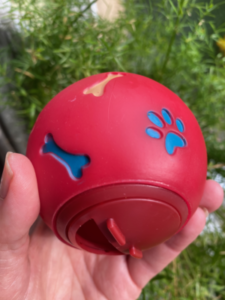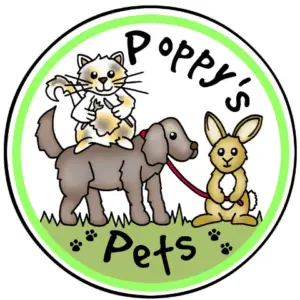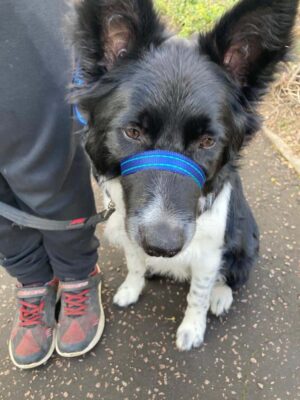As a first-time owner of a young Border Collie, you will be surprised by their high intelligence, energy and natural working dog tendencies. This article explores insights and tips during the critical development stage that can help build a strong foundation for a solid and harmonious relationship with your dog.
Border Collies are highly intelligent and active dogs known for their extraordinary problem-solving skills. As a working dog, the breed is also famous for its herding abilities. In this guide, we include the behaviour exhibited by Border Collies from 8 weeks to 24 months and help navigate this critical phase by giving your puppy a real start in its developmental stage and as it grows, allowing it to become a fulfilled and happy dog.
Each section recommends similar methods, but each life stage and why the behaviour is unharmonious.
Shopping List:
- Heavy duty pen – my family found this suitable for a small puppy
- Furbo UK on Amazon – Interact with your pooch when out
- Furbo UK – buy direct
- Puppy training pads or try Wilko, B&M or QD
- Flea, tick & lice treatment with 1 month free
- Fluffy pet insurance with rewards on pet food, groceries etc
- Itch-Insure – get 10% to 17% off with any flea treatment
- Woofz – a dog training app
- 50% off Woofz Premium
- Pure puppy training bundle
- Nylabone teething chews
- Nylabone teethings toys
- Kong puppy – a toy for treats
- Woof Fresh – keep your dog’s teeth clean
- Quirky Snuffle Mats
- Outward House feeding puzzles – levels 1 to 4
- Interactive games
- Percute Puppy Herding
- Pop-up Cross Tunnel
Section 1: The enthusiastic Border Collie puppy – 8 weeks to 12 weeks

You might have adopted or bought your Border Collie. Either way, a puppy must remain with Mum until 8 weeks old. As with all puppies, it will be filled with energy, curiosity and cuteness, but this period is crucial as it sets the stage for their future behaviour and learning capabilities.
In this section, we discuss:
This life stage is characterised by rapid learning and exploration. Establishing a consistent routine, socialising your puppy, and introducing basic obedience training is essential. Treats and praise can be used as positive rewards when your puppy has performed correctly. This method can lead to shaping the right behaviours.
1.1 Establishing a Consistent Routine:
During the first 8 to 12-week period, establishing a consistent routine for your Border Collie puppy is essential for their development and well-being. A consistent routine is vital because it provides structure, and predictability, and helps towards house training.
A consistent routine helps your puppy understand what is expected and contributes towards structure. Planning and following a set schedule for feeding, toilet breaks, playtime, naptime, and training sessions, you provide clear guidelines to your puppy but expect a gradual learning process.
Puppies are still developing bladder and bowel control; a routine helps them understand when and where to toilet. There will be accidents; when crated, ensure you use puppy training pads. The pads come in different sizes and bundles on Amazon, B&M, Wilko and QD Stores are the most cost-effective. While training, take your puppy outdoors regularly to an area you selected for toileting. This will help establish a regular pattern that reinforces toileting behaviour.
Additionally, a routine helps with managing energy levels. Border Collie puppies are known for their high energy; adequate exercise and mental stimulation are important so schedule playtime and exercise sessions to stop boredom, early destructive behaviour, and excessive energy that can lead to naughty behaviour.
Watch the Video: Best home snug room & travel kennel crate for your puppy
Watch the Video: Best strong multi-purpose pen for puppies, teenage dogs or rabbits
Bunny Business store on Amazon sell this multi-purpose pen available in 3 sizes; it gives more freedom. Alternatively, they sell gated metal dog crates.
1.2 Socialisation:
Introducing your Border Collie puppy to various people, animals, and environments will promote positive social interactions. Don’t forget to check your local veterinary practice for puppy parties. Expose your puppy to different sights, sounds, smells, and experiences for enrichment but ensure this happens in a controlled and positive manner. Encourage interactions with friendly people and other well-behaved dogs. This exposure helps your puppy build confidence, develop appropriate social skills, and become comfortable in diverse environments. Early socialisation lays the foundation for a well-adjusted and socially adept adult Border Collie.
1.3 Basic Obedience Training:
Implementing positive reinforcement techniques, such as reward-based training when teaching early and important commands and helps establish good behaviour patterns early.
1: Start with simple commands – begin training by focusing on basic commands such as ‘sit,’ ‘stay,’ ‘come,’ and ‘down.’ These commands form the foundation of obedience training and give your puppy a start in learning and responding to those commands
2: Use positive reinforcement – positive reinforcement involves rewarding your puppy with good behaviour. Use treats, praise, or play and immediately offer a reward when your puppy follows a command correctly. Positive reinforcement will help your puppy recognise obedience results in positive outcomes, motivating them to learn and obey commands
3: Consistency is key – maintain consistency in your training sessions. Use clear and consistent verbal cues for commands, and ensure that all family members or individuals interacting with the puppy use the same cues and reward system. This consistency helps your puppy understand and respond to commands effectively
4: Short, frequent training sessions – follow the ‘rule of thumb’ for training sessions but assess your puppy’s energy and tiredness levels. Puppies have shorter attention spans, so multiple short sessions are more effective than one long session. Training should be fun and engaging for your puppy, creating a positive learning experience. YouTube is an excellent platform to find puppy training videos, or download the app Woof, a doggy training app for new and experienced dog owners.
| Your Puppy’s Age | Walking Time Based on 5 mins for every 4 weeks old |
|---|---|
| 8 weeks | 10 minutes |
| 12 weeks | 15 minutes |
| 5 months | 25 minutes |
| 8 months | 40 minutes |
5: Gradual progression – gradually introduce more commands as your puppy learns the basic commands. Use reward training and continue introducing new challenges and commands, based on positive behaviour.
6: Seek professional guidance if needed – if you encounter difficulties or have specific training goals, consider seeking assistance from a professional dog trainer. They can provide additional guidance, tailor training methods to your puppy’s needs, and address any specific challenges you may face
By prioritising routine and socialisation during this crucial stage, you can set the stage for a well-rounded and behaviourally sound adult Border Collie. But there are further stages to go through and training to implement.
Watch the Video: Tasting the Treats: Dogs review ItchPet treats
Browse tempting healthy dog and cat treats, or get a month’s free flea, tick & lice treatment
Section 2: Teething troubles in a Border Collie puppy – 3 weeks to 8 months
A Border Collie puppy begins the teething stage at three weeks of age. Because a puppy is with Mum until 8 weeks old, whether with a reputable breeder or in a rescue centre – Mum will reprimand her young pups for biting. At 8 weeks, a puppy is ready to leave home and start a new life with its new family. During its life stage of 8 weeks to 8 months, your cute Border Collie puppy may be very grumpy and challenging to train because of intermittent pain from teething. Instead of believing you have a naughty Border Collie, understand this is a period of training and helping your puppy.
The teething timeline of a Border Collie puppy:
| Age | Teething |
|---|---|
| 3 weeks old | 28 deciduous (baby) teeth begin pushing through the gums |
| 6 weeks old | A puppy’s baby teeth will be through |
| 4 months old | The canine and premolars start pushing through the gums |
| 5 – 6 months old | The adult molars also start pushing through |
| 8 months old | Your puppy now has 20 upper adult teeth and 22 lower adult teeth |
| Around 8 months | The teething stops! |
Your puppy will be desperate to alleviate the pain and select anything to chew – shoes, furniture, garden equipment, door frames. A pup will grab at your clothes, and pull and rip them too.
Inflamed gums will cause:
| Tingling | Itchiness |
| Sudden pain | Discomfort |
Let’s explore steps you can take to help, train and support your puppy during its teething and first destruction stage –
2.1 Providing Appropriate Chew Toys and Food:
Providing a variety of soft chew toys and food can help manage the pain and decrease the discomfort. When selecting toys, opt for reputable retailers selling dog-safe toys, not cheap brands with accessories that will fall off and choke your dog.
Best soothing toys and foods for a Border Collie when teething:
- Ice cubes – plain ice cubes are suitable or frozen with puppy food, peanut butter made for dogs, or yogurt that is sweetener-free and additive-free
- Banana – peel and freeze
- Carrot – peel and freeze
- Tea towel – knot a clean tea towel with treats inside.
- Tea towel – roll up a wet tea towel and freeze
- Teething chew – Flavoured twin pack Nylabone is designed for puppies with baby teeth and will help to soothe
- Teething toy – Nylabone produces a wide range of teething toys and chews, including the teething ring.
- Kong Puppy – Kong is a recognisable brand. Kong Puppy can be filled with treats or dog-safe peanut butter. The product can be frozen to provide variation


Consider food options early:
Your food choice plays a massive part in your puppy’s dental health. I’ll use Teddy as an example. He is an older dog and lived in Romania. When he arrived in the UK, a video shows white teeth, probably from a raw food diet because of the prey he caught to survive. In the UK, he was fed commercial Aldi canned wet food combined with human-grade cooked chicken. Commercial contains byproducts, artificial preservatives and sugars which are unhealthy – Teddy has lots of plaque and tartar buildup.
Admittedly, some dogs are prone to dental issues because of genetics but to avoid plaque and tartar, consider a raw food diet (details coming soon). Good hygiene practices benefit your dog’s dental health and well-being and save money on extractions later in life.
Give your puppy a head start with dental care:
- 500ml Woof Fresh – plant-based with essential oils and herbal concentrates. It’s a liquid to add to your dog’s water. Oscar, a 13-year-old dog, is testing this product
- Dorwest Herbs – roast dinner toothpaste
- VioVet OraFresh granules – natural seaweed and pomegranate. Mix into your dog’s food
2.2 Managing Destructive Behaviour:
We have established that a Border Collie puppy will want to chew everything in sight during the teething stage. It is not bad behaviour; your puppy is chewing to stop the pain in its mouth. At this point, you can stop your puppy from chewing the wrong items with consistent redirection training.
The teething stage ends around 8 months, so owning a Border Collie puppy means donating hours to ongoing training. Allowing your puppy to chew belongings and furniture will make your pup believe it is acceptable behaviour and continue into adulthood.
Above, we listed food and toy choices beneficial for soothing purposes.
1: Cold food and products – helps to reduce pain
2: Chew toys – eases the itchiness
The next stage is beginning redirection training, which means training your puppy to stop chewing the wrong items and transitioning a pup’s attention into chewing the right things.
How to use redirection training for a Border Collie puppy:
1: Call your puppy’s name
2: Give a firm ‘No’ but gently and calmly. Never shout or scold your puppy
3: Give your puppy a teething chew or frozen food and wait
4: When your puppy’s attention is focused on the new product, offer a reward treat and fuss your puppy
You must use the redirection method several times a day for several weeks; consistency is the key. Another essential step is toy and food rotation – your Border Collie will become bored of the same toys and foods so investing in a variety is another development key. Always follow with a reward treat and choose different flavours. Pure has a puppy training bundle which includes an all-natural milk last-lasting chew, and contains prebiotic chicory root to help the gut. With patience and time, the results will prove positive in your dog’s future.
Section 3: Adolescence – 6 months to 12 months

As your Border Collie transitions into adolescence, hormonal changes and changes in the brain are shown with behavioural challenges. A Border Collie puppy progresses into rebellious teenage years between 6 to 12 months but ends between 18 and 24 months. You will now battle with a teenage dog, and your time, consistent training and financial expenditure.
What to expect of an adolescent Border Collie:
Depending on an individual dog’s personality, hormonal changes will affect every Border Collie differently. At this age, a Border Collie wants more independence and will test the boundaries.
- One step forward and two steps backwards with commands that were once successful
- Achieved obedience declines
- Your teenage dog will dislike being told to stop, and it will lead to conflict
- Situations your Border Collie coped with before may now worry your dog causing anxiety
- Your dog will become a temperamental teenager who fails to understand and deal with its rebellious actions
- Unable to control random impulses
- A teenage Border Collie will want more interaction, exploration, running and energy
- Expect your Border Collie to jump over a sofa, across the bed, on a worktop
- If unable to get what it wants, a Border Collie will have mood swings leading to barking, nipping, destruction, and biting. Understand this happens because your Border Collie is frustrated and remember, it is a highly intelligent, energetic breed
During the teenage years, Border Collies tend to be rehomed or booked for euthanasia, but this can be prevented by giving time and training. Because of the cost of living crisis, rescue centres are full because dogs are being surrendered by families who cannot afford to keep them. Typically, behaviour and change of circumstances (moving home or a baby) are other reasons for having a dog put to sleep. And for some, because they are old.
Therefore, before adopting or buying a dog, consider whether you can commit for at least 18 years. Consider your personal circumstances now and plans for the future, your finances, and your time to train.
Maintaining consistent with the following is vital:
| Consistent training | Engaging interactive play |
| Addressing behavioural issues | Continue to reinforce the bond between you |
Because you’ll find a Border Collies adolescent phase extremely challenging, this section covers:
3.1 Consistency in Training:
Maintaining consistent training methods and reinforcing obedience commands to navigate challenging adolescent behaviours is significant.
3.2 Engaging Interactive Play:
Encouraging interactive play will strengthen the bond between you and your Border Collie, providing an outlet for their energy and keeping them occupied.
Interactive food treat puzzles – Outward House has an exciting selection of interactive games starting from level 1 and finishing at level 4. Each comes with different compartments created into different styles forcing your Border Collie to think about how to get the treats. These puzzles are suitable for younger puppies too. When your dog completes a task, praise your Border Collie
Other types of games are:
- Foraging – Bertie used the Lamwek Foraging Mat
- Brainwork – interactive and stimulating feeding game snuffle mat. I love the trendy range of quirky feeding snuffle mats because it each contains various compartments for your puppy to forage
- Snuffle Ball – this interactive dog treat game might be something you can make too
- Interactive Games – there’s a huge variety of games. However, I do not recommend games that encourage your puppy to pull at
Chew Toys – invest in different chew toys designed for dogs
Tricks – teach your dog tricks. One I’ve seen is holding a small branch when on a walk and teaching your dog to run at it, jump and grab it
Outdoor walks – try new countryside locations, woodlands, walking tracks. if your dog is good on recall during the naughty stage, throw a tennis ball and teach your dog to return it. Go to the beach and let your dog dig in the sand or enjoy a splash around in the sea but attach a strong lead if going in the water – the current is strong.
Agility course – have fun with your Border Collie and invest in a home agility course, make your own from what you have, or find local classes
Other garden games:
- Foraging – puppy treats sprinkled over the lawn
- Pecute Puppy Herding – paddling pool with ducks or balls
- Dog Sprinkler Pool – a better option for a very young puppy. Add plastic balls for more fun!
- Portable Agility Course – a Border Collie puppy is fine-tuned for agility. Use ground level whilst a very young puppy. because it is portable, it can be packed up for holidays
- Pop-Up Cross Tunnel – a puppy will have fun running through and more fun chasing balls inside
- Trixie snack ball – look for sale baskets in independent pet stores. I bought the snack ball for £1. It is also available at VioVet or Amazon – sizes vary
When buying any products, ensure it is British Standard. And when purchasing balls or ducks, ensure they are not too small for your dog to swallow.
3.3 Addressing Behavioural Challenges:
You must understand the changes in your teenage dog are from changes to its hormones and a part of the growing-up process. This stage may cause your dog to become more jumpy, afraid or frustrated leading to unwanted issues.
Managing attitude with boundary testing, impulsivity, and overexcitement is a stage in your dog’s development. Never scream, hit, or shout at your Border Collie; it will become a frightened, nervous canine if you do. Your aim is a progression into a calm and obedient canine so be firm and consistent but use a happy tone and reward for good behaviour.
What are the signs of an anxious Border Collie:
- Destruction of belongings
- Depression
- Soiling in inappropriate areas in the home
- Restlessness
- Pacing
- Jump up and sometimes over fences
- Attention seeking with barking and/or whining
Addressing behavioural challenges in a teenage Border Collie requires patience, consistency, and appropriate training techniques.
Here are some steps to help tackle these challenges effectively:
1: Identify the specific behavioural challenges – understand and define the specific behaviours from hormonal changes that need addressing. Common challenges in teenage Border Collies may include excessive energy, stubbornness, jumping, nipping, or pulling on the lead
2: Always provide consistent training – establish a consistent training routine that addresses unwanted behaviours and use positive reinforcement techniques such as treats, and praise to reward your teenage Border Collie to encourage your desired results. Avoid punishment-based training methods as they can lead to fear or aggression
3: Exercise and mental stimulation – expect your teenage Border Collie to have high energy levels so regular physical exercise and mental stimulation is required. Go on daily walks, give them interactive play sessions, puzzle toys, and obedience training. Mental stimulation helps keep their minds occupied and prevents boredom-related behavioural issues because, as a highly intelligent breed, the brain needs to be used
4: Enforce boundaries and rules – setting clear boundaries must be enforced and continued. Establish rules regarding access to furniture, on the bed or upstairs, jumping up on people, and appropriate play behaviour like tugging. During this stage, you must be firm and consistent in enforcing these boundaries, reinforcing positive behaviours with rewards and redirecting unwanted behaviours. The Border Collie will test your patience big time so you may need to separate areas in your home. Corden off areas in the home and garden – the heavy-duty multi-purpose pen we mentioned before is ideal. Our YouTube video demonstrates the type my family used with their Border Collie. The product comes in three sizes and is available from Amazon
5: Socialisation – proper socialisation is crucial during the teenage stage too. Continue to expose your Border Collie to different environments, people, animals, and situations in a positive and controlled manner. This helps them develop confidence, reduces anxiety, and prevents behaviour problems related to fear or aggression. However, never force your dog into situations or environments that cause fear, frustration and anxiety
6: Seek professional help if issues persist – If behaviour issues continue pass 24 months, or become unmanageable, consider consulting a professional dog trainer or behaviourist. Speak to your vet first and in your local area for recommendations. A professional trainer can provide expert guidance tailored to your Border Collie’s needs and offer additional training strategies. Fluffy Pet Insurance offers free dog training too. experience, Border Collies suit certain homes too – one-person dog, a family dog, loves living with other pets, or prefers to be the only pet but okay have visiting canine companions.
Remember, addressing a hormonal teenage Border Collie takes time, consistency, patience and money. Be consistent with your training efforts, provide adequate exercise and mental stimulation, and seek professional help if required. With proper guidance and training, you can help your Border Collie overcome these challenges and develop into a well-behaved adult companion.
Section 4: Herding instincts and behavioural challenges – 7 months onwards
The Border Collie from 7 Months has a herding instinct which is more significant and can manifest as nipping or chasing. Family members and pets may find this behaviour directed at them, and alarmingly, a Border Collie may try to herd moving objects like cars or bicycles. This must stop so vital to provide outlets for these natural instincts through structured activities, such as agility training or obedience competitions. Redirecting their focus onto appropriate activities can help mitigate unwanted behaviours.
Because Border Collies possess strong herding instincts, which can lead to specific behavioural challenges, this section focuses on:
4.1 Understanding Herding Behaviour:
A Border Collie will naturally explore the instinctual behaviours of its breed. These include nipping, chasing, and circling. It is very important to manage these behaviours in your Border Collie by using redirecting methods again.
Continue to provide the appropriate chew toys or frozen foods, and discourage play-mouthing games with your dog. Chasing can be redirected through games that involve fetching or using interactive toys that simulate herding activities. Understanding the natural inclination to circle is a step forward for you as an owner of a working dog. Provide outlets for this behaviour, such as engaging in structured activities that mimic herding tasks. An example of a herding game is with Christina which involves inexpensive equipment and a tennis ball. Another idea is a paddling pool filled with rubber ducks or balls, which allows your puppy to test its herding skills and occupy their mind.
4.2 Structured Activities:
A suggestion is to engage your young dog in activities like obedience training, agility, and herding trials to fulfil their natural Border Collie instincts and mental stimulation needs.
Attending chargeable courses can financially impact your pocket, especially today. Consider searching on YouTube for free classes and practice at home, or watch Christina’s video. Engaging your Border Collie in structured activities can greatly benefit their well-being and create a fun time with your dog.
Obedience training provides mental stimulation and helps establish boundaries and control over unnatural herding instincts. However, where available, herding trials are beneficial as they provide a controlled environment to exercise their natural working dog herding skills under professional guidance. Agility training allows them to utilise their natural athleticism while following directions. It helps overcome obstacles and allows a Border Collie to exert what comes naturally. Fulfilling a working dog’s instinctual needs, giving mental stimulation and physical exercise, will strengthen the bond between you and your companion and form a well-rounded dog.
4.3 Reinforcing Recall and Impulse Control:
There are techniques for strengthening recall commands and impulse control to manage your Border Collie’s responses to their herding instincts.
Recall commands and impulse control are vital for managing your Border Collie’s responses to their herding instincts. Without it, children can become afraid of the family dog if it herds or nips, and parents fear the dog biting. Biting can mean euthanasia for a dog. So it is your responsibility to provide training and practice a strong recall that allows you to call them back reliably, redirecting their focus and preventing them from engaging in undesirable herding behaviours with family, pets and cars. Consistent training, positive reinforcement, and rewards for coming when called can help reinforce good behaviour. Impulse control exercises, such as “wait” or “leave it” commands, will help your Border Collie resist the urge to chase or nip and teach self-control.
It’s worth mentioning another common action of the Border Collie. You’ll notice your dog suddenly get into the laying down position, focusing on an object in the distance. This action is the same when herding sheep. Some owners have difficulties encouraging their dog to move because of their fixation. Bertie performed this action when he saw another Border Collie in the distance.
The purpose of this is for the dog to hide before lunging or giving chase to cars, sheep etc. This is their thinking time about what to do next. If you use Christina’s method, expect your Border Collie to use the laying down position too. Again, use the redirection method with reward treats to engage your Border Collie and give them when it is back on its paw and moving on.
Incorporating these training techniques into your daily routines will enhance their responsiveness and allow for better management of their herding instincts if unable to attend herding trials.
Related articles:
- Notorious Behaviour of a Border Collie.
- Yorkshire’s Dog Lost UK – where do you find missing Border Collies? Scroll to the end
- Teddy the rescue dog – his walking trails
- Adverse behaviour of puppy castration – experienced by a Border Collie
Section 5: Essential factors for a balanced Border Collie

In this final section, we emphasise two key elements necessary for a well-rounded Border Collie:
Border Collies thrive on mental and physical stimulation. Without providing adequate exercise and mental stimulation because of other life commitments can result in boredom and destructive behaviour. Continue to incorporate daily exercise routines, interactive toys, puzzle games, herding games, and obedience training sessions to keep your Border Collie’s mind sharp and their energy well-spent.
5.1 Mental Stimulation:
The importance of providing mental challenges through puzzle toys, interactive games, and training sessions to prevent boredom-related behavioural issues will never end, and can be a drain on your pocket. Brain-stimulating puzzles are available in various online stores, including TV-advertised Etsy, which also offers a purchase protection scheme.
5.2 Socialisation:
Proper socialisation is vital for a Border Collie, especially introductions to its own breed. Introduce your growing puppy to various people, animals, and environments to ensure they grow up to be confident and well-adjusted. Puppy socialisation classes and controlled playdates can support good social skills, and consider joining dog walking groups too. Again, consistent training sessions focusing on obedience and impulse control will contribute to a well-behaved companion.
5.2.1 Daily Exercise Needs:
Understanding the recommended amount and type of exercise based on your Border Collie’s age, health, and energy levels. This can include brisk walks in stimulating environments, jogging, hiking, or dog sports like flyball or frisbee. Our local parkland has outdoor agility obstacles for dogs. Read our article about the pros and cons of walking gear tried and tested for a family Border Collie, and its video showing you the products.
5.2.2 Off-Leash Play and Socialisation:
Highlighting the benefits of allowing your Border Collie to safely engage in off-leash play sessions in secure environments, such as fenced dog parks or designated play areas. This enables them to socialise, burn off excess energy, and reinforce social skills.
5.2.4 Adapting Exercise to Individual Needs:
Recognising that each Border Collie is unique, with varying exercise requirements. Factors such as age, health, and temperament should be considered when determining the appropriate duration and intensity of exercise.
Key takaways:
- Understand the life stages of a Border Collie, expectations and natural desires of the breed
- Establish a consistent routine
- Provide socialisation opportunities and implement positive reinforcement training methods
- Address teething challenges with home remedies or purchase items
- Understand teenage rebellion is hormone change
- Manage herding instincts
- Ensure ample physical exercise and mental stimulation
- Your time and effort is required, which will help guide your Border Collie toward becoming a well-behaved, balanced, and contented companion
- Remember – patience, consistency, and love are key ingredients for successfully raising a Border Collie and enjoying a lifelong bond with your four-legged friend
Related questions:
Pet insurance with rewards
There are two pet insurances with different types of rewards:
Fluffy Pet Insurance – the legal jargon is written in laymans terms, and buying the insurance gives you access to free vet help, a pet trainer and dog training using the app.
You’ll also get discounts and an example of those rewards are:
- Pet food subscription
- Toys and treats
- Grocery shopping
- Coffee
- Clothes and makeup
- Access to the pet community
Itch-Insure – ItchPet is TV advertised, offers vet help, says 98% of claims are paid, track your claim online and 10% to 17% off with a flea treatment plan.
Whether you take out insurance or not, you can get one month free with the flea, tick and lice treatment for dogs and cats. Any ItchPet products can be bought as a one-off or regular subscription, and it is the subscription plans that gives you access to the insurance.
I think buying flea treatment is the better and cost-effective option.
- Following the free month, the spot-on flea, tick and lice plan is £7
- Flea, lice, tick treatment and wormer £3.50 (on offer. Full price £8.17)
- Wellness plans
Poppys Pets is a participant in Awin and Amazon Associate affiliate programs which compensates me for referring traffic. It is of no extra cost to you and if thinking of buying a product, please consider using my link. It\'ll earn Poppy\'s Pets a few pennies to continue to this website. Only a selection of articles and videos on this website and YouTube channel contains affiliate links. Further information: Disclaimer and Privacy Policy



